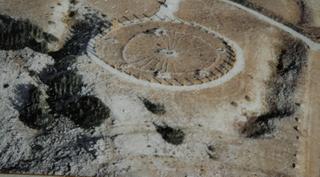Here's two quotes for consideration.
Intuition and Logic in Mathematics by Henri Poincaré
On the other hand, look at Professor Klein: he is studying one of the most abstract questions of the theory of functions to determine whether on a given Riemann surface there always exists a function admitting of given singularities. What does the celebrated German geometer do? He replaces his Riemann surface by a metallic surface whose electric conductivity varies according to certain laws. He connects two of its points with the two poles of a battery. The current, says he, must pass, and the distribution of this current on the surface will define a function whose singularities will be precisely those called for by the enunciation.
Felix Klein on intuition
It is my opinion that in teaching it is not only admissible, but absolutely necessary, to be less abstract at the start, to have constant regard to the applications, and to refer to the refinements only gradually as the student becomes able to understand them. This is, of course, nothing but a universal pedagogical principle to be observed in all mathematical instruction ....
I am led to these remarks by the consciousness of growing danger in Germany of a separation between abstract mathematical science and its scientific and technical applications. Such separation can only be deplored, for it would necessarily be followed by shallowness on the side of the applied sciences, and by isolation on the part of pure mathematics ....
In context of examination while not mathematically trained I was always curious about the process unfolding.... the foundations and their beginnings. The Sound Of Billiard Balls
Dirac became proof for me of the issue of being abstract while needing the image to go with it? Symbolically recognized while analytically described. So his axiomatic stance lead me to question why how and why Feynman designed his "word art(feynman diagrams)?"
When one is doing mathematical work, there are essentially two different ways of thinking about the subject: the algebraic way, and the geometric way. With the algebraic way, one is all the time writing down equations and following rules of deduction, and interpreting these equations to get more equations. With the geometric way, one is thinking in terms of pictures; pictures which one imagines in space in some way, and one just tries to get a feeling for the relationships between the quantities occurring in those pictures. Now, a good mathematician has to be a master of both ways of those ways of thinking, but even so, he will have a preference for one or the other; I don't think he can avoid it. In my own case, my own preference is especially for the geometrical way.Paul DiracPart of finding this truth is a deep examination(deep play) of what has been perpetuated so far and a meta look synopsis at how to gather and explain it so as to move on.
The deeper truth is an image that has to be explained? Part of our innateness has left an impression on the soul and recognizing the "time capsule" that is mandala in origins, is the method by which the soul engages what explodes back into their consciousness? This arises from a subconscious level and so too having traveled there you recognize what happens when you touch the very core of your being?
While I may refer to the geometric as inherent in such a truth in expression as some light behind us shining our shadow on the cave walls, these geometries can be covered by ancient designs and can lead the soul back to this beginning?
While you were looking out there, you were looking inside.
***
On developing the intuition I had a comment that I wanted to bring together here so it is understood that while we may hold science as a standard within our question for knowledge it is also required that we learn to understand somethings about ourselves in that process.See: Understanding our Angels and Daemons

























